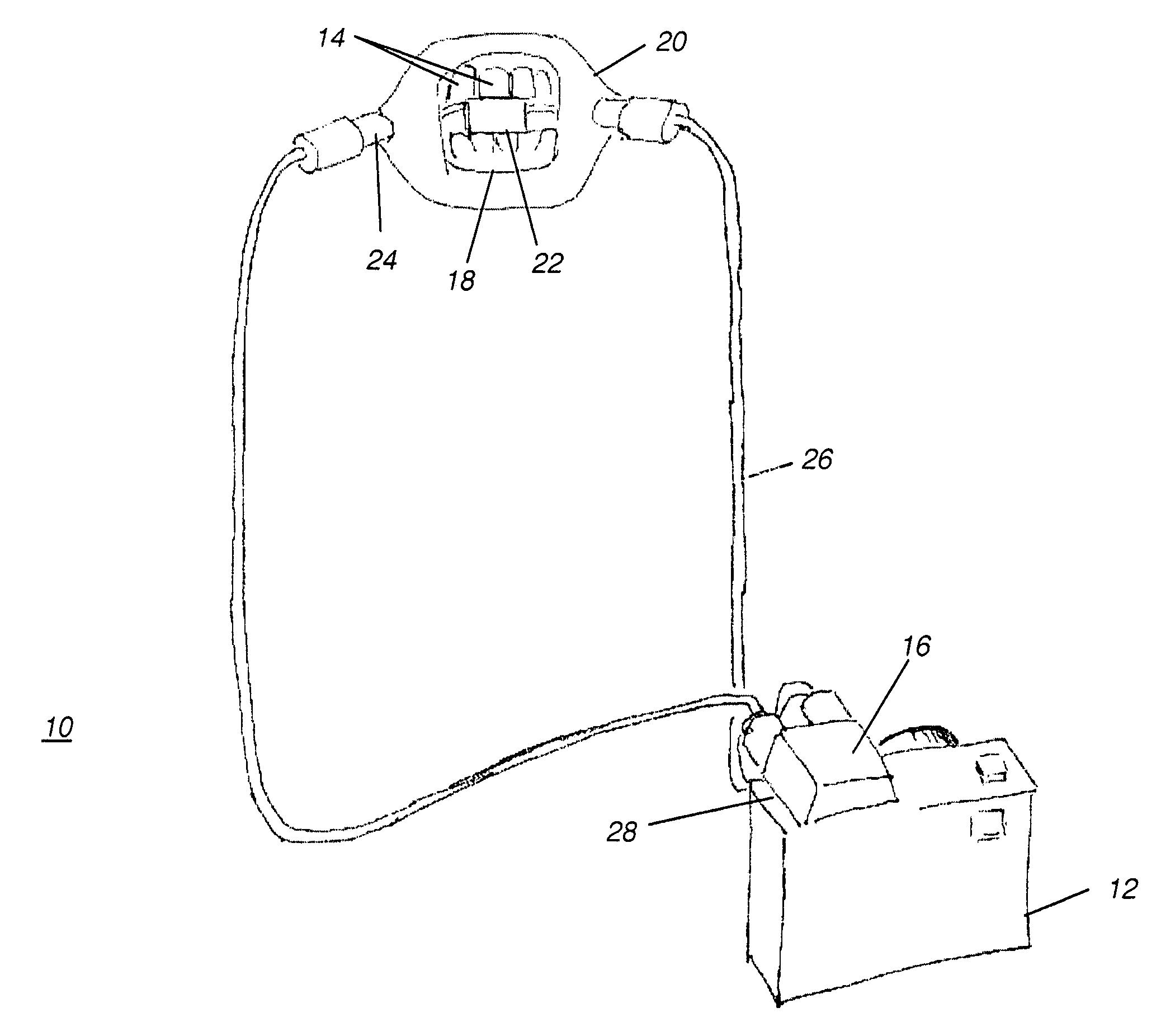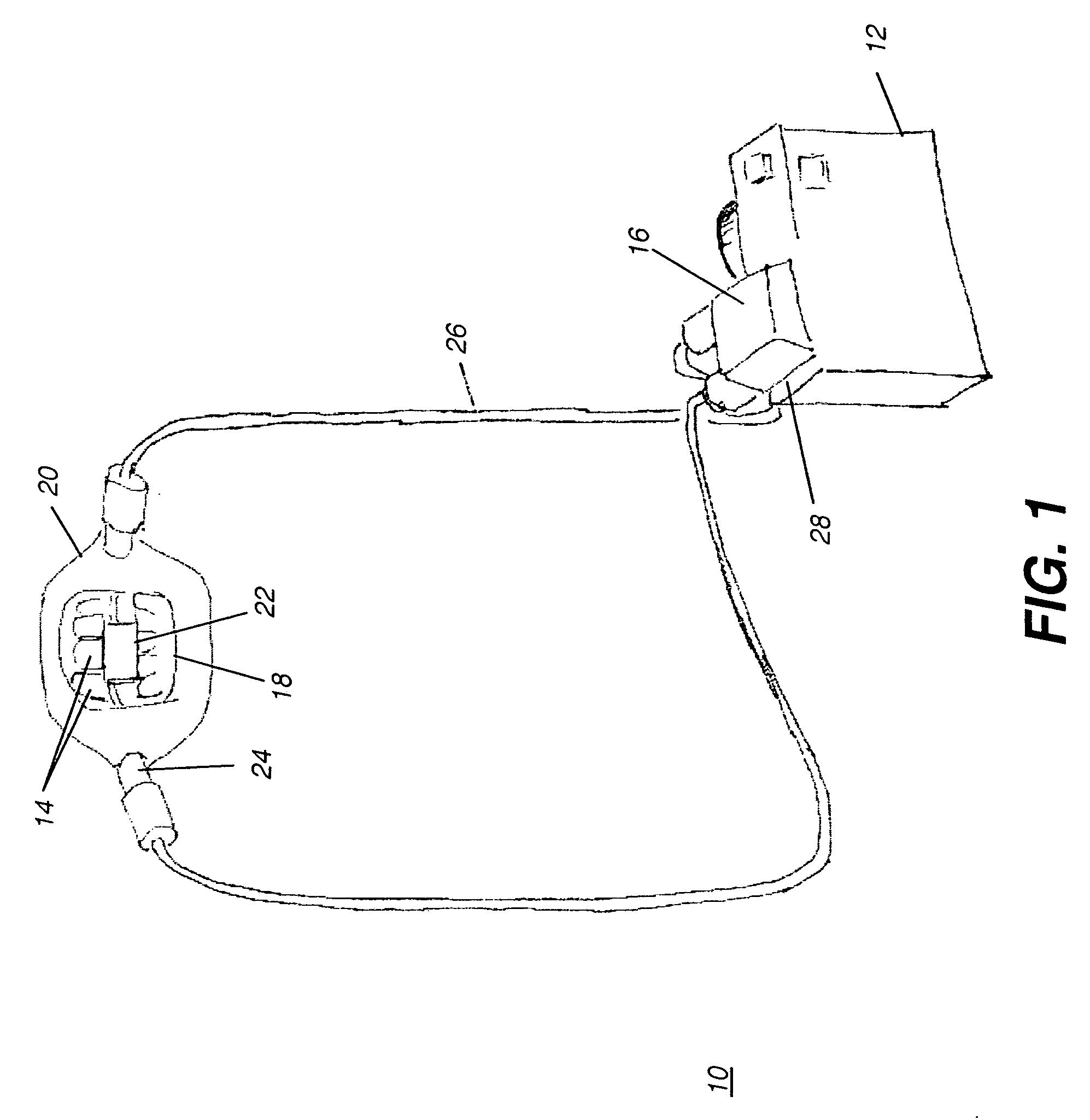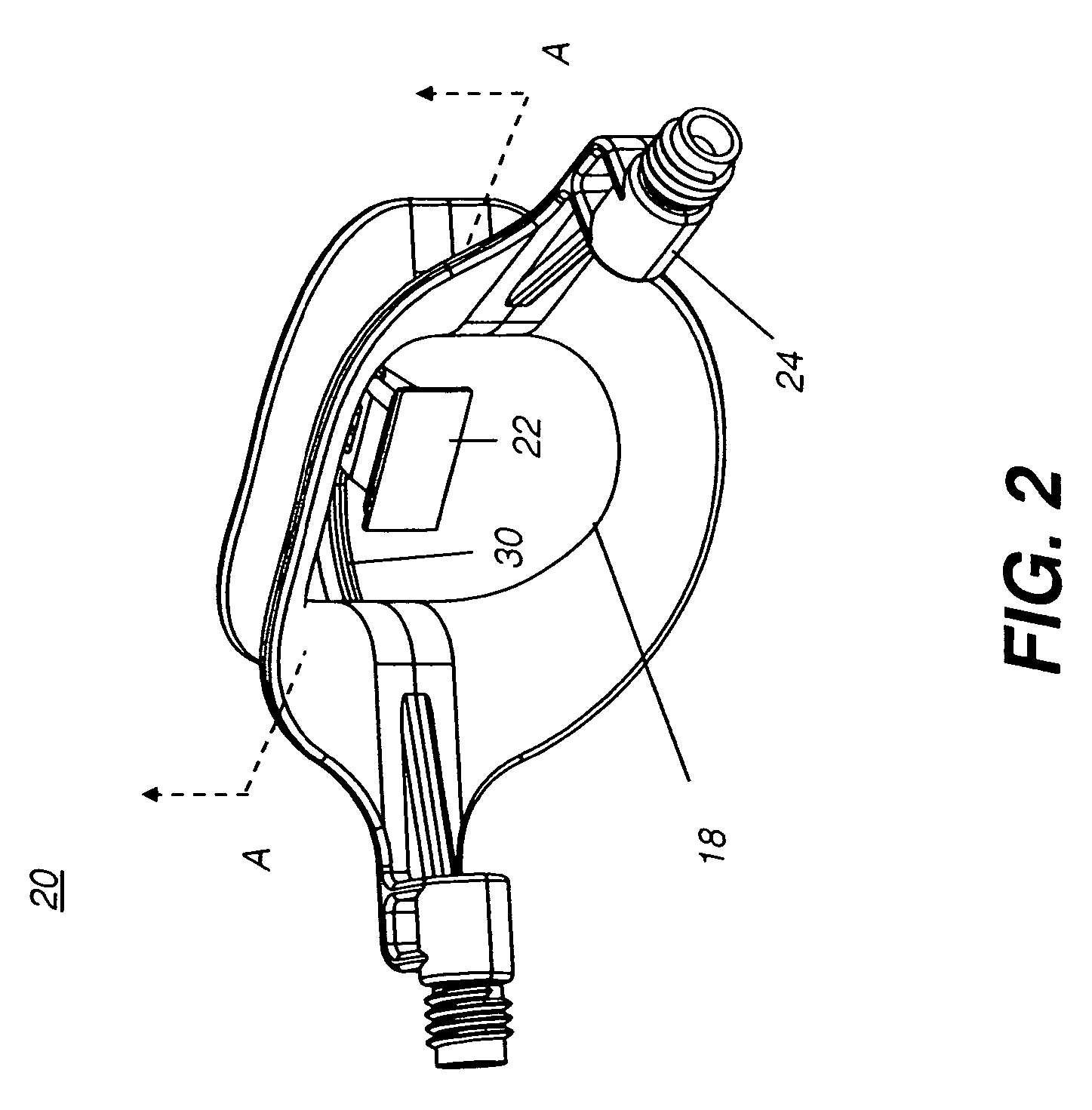Producing such realism involves a considerable degree of skill.
Moreover, it requires that information regarding the color and other appearance characteristics of a patient's teeth be accurately determined and unambiguously conveyed to those who will be fabricating the restoration.
While molds and other techniques can be used to
record and transfer information regarding tooth shape and other geometric characteristics, techniques for determining and conveying color and other appearance characteristics are more problematic.
The conventional visual shade matching process has a number of problems.
The initial matching procedure is often long, difficult, and tedious.
Deciding which tab matches most closely (i.e., which mismatches the least) is often difficult.
Frequently, the dentist may determine that the patient's teeth are particularly difficult to match.
Despite the time and effort expended, this conventional visual
color matching procedure fails (i.e., the prosthetic is rejected for color by the dentist and / or the patient) in about 10% of cases.
Given the difficulty of the task, this rate of failure is not at all surprising.
Visual color evaluation of relatively small color differences is always difficult, and the conditions under which dental color evaluations must be made are likely to give rise to a number of complicating psychophysical effects such as local chromatic
adaptation, local brightness
adaptation, and lateral-brightness
adaptation.
Moreover, shade tabs provide at best a metameric (i.e., non-spectral) match to real teeth; thus the matching is illuminant sensitive and subject to variability due to normal variations in human
color vision (e.g., observer metamerism).
The difficulties associated with dental
color matching have led to the development of a number of systems that attempt to replace visual assessments with
instrumentation-based assessments using various types of spectrophotometric and calorimetric instruments.
Although the idea of basing shade matching on objective measurements rather than on subjective visual color assessments seems appealing, such measurements are extremely difficult to perform in practice.
As a result, reports from dentists and
dental laboratory personal indicate that the level of performance of currently available instrument-based shade matching systems is not entirely acceptable.
Uncertainties resulting from available instrument-based systems generally require that traditional visual assessments must still be performed for
verification.
One result of this complexity is that color appearance and
color measurement are greatly influenced by lighting geometry, surrounding colors, and other environmental factors.
A further complication is that color is generally not uniform within a
single tooth.
Color non-uniformities may result from spatial variations in composition, structure, thickness, internal and external stains, surface texture, fissures, cracks, and degree of wetness.
As a result, measurements based on relatively large areas produce averaged values that may not be representative of a tooth's dominant color.
In addition, natural color variations and non-uniformities make it unlikely that a given tooth can be matched exactly by any single shade tab.
Tooth color also is seldom uniform from tooth to tooth.
Therefore, the ideal color of a restoration may not be an
exact match to that of an adjacent tooth or to any other
single tooth in a patient's mouth.
A further difficulty is that successful color communication requires that
tooth color can be measured and specified according to a set of absolute reference color standards, such as numeric colorimetric values or reference shade tab identifiers.
Furthermore, error tolerances for all aspects of
tooth color are extremely small.
This proximity makes even small color errors very apparent.
Understandably, they are quite intolerant of restorations that appear inappropriate in color.
Lighting is an additional source of difficulty in performing dental color measurements.
These two needs are often in conflict; optimum conditions for making dental measurements generally are quite different from those of the real world.
Additionally, visual color assessments and objective measurements must be made in inherently difficult environment, i.e., the mouth of a live patient.
If the patient's mouth is open, the teeth begin to dry in a relatively short period of time.
Instrument measurements or visual matches made under such conditions will likely lead to poorly matched prosthetics.
Color assessments, specifications and communication are further complicated by a lack of accurate
color calibration within the dental industry.
These variations make color communication based on such tabs ambiguous.
As a result, a prosthetic built to match the color of the laboratory's shade tab will not match the color intended by the dentist.
Although a number of shade-matching systems have been described in the prior art, none fully addresses all the issues addressed above.
However, that assumption is not generally true.
Furthermore, the spectral sensitivities of current digital cameras, including conventional and intra-oral cameras, are not equivalent to a set of visual
color matching functions.
As a result, matches determined from RGB measurements, or from HSI or other values derived by applying any given single set of conversion equations to measured RGB values, generally do not result in accurate visual matches.
Using colorimetric or spectrophotometric devices in this manner does not address the fundamental problems associated with the metamerism of natural teeth and shade tabs because the devices are used to analyze the color of the resulting photograph, not the color of the original tooth and shade tab.
The color comparison therefore will be subject to metamerism problems resulting from the fact that, like digital cameras, photographic media have RGB spectral sensitivities that are not equivalent to a set of visual color matching functions.
Thus, a tooth and shade tab that match perfectly in the photographic image (visually, calorimetrically, and spectrally) still may not match visually
in real life.
However, the geometry and other characteristics of the lighting used on such systems described in the prior art generally do not correspond to the lighting conditions under which teeth normally would be viewed.
Spectrophotometric or calorimetric measurements made under non-representative lighting conditions may produce non-representative color values that result in unsatisfactory visual matches under normal viewing conditions.
Moreover such systems do not provide images of the full mouth, or even of adjacent teeth.
Thus, they do not provide information required to ensure a shade match that is harmonious in color with the surrounding teeth and
mouth structure, nor do they convey other important information related to tooth appearance such as texture and gloss.
However, shade matches achieved under such lighting conditions may not necessarily match under more normal ambient light conditions.
Bulky and cumbersome apparatus requiring continual checks or adjustments would not be favorable; ideally, illumination should require little or no adjustment.
 Login to View More
Login to View More  Login to View More
Login to View More 


